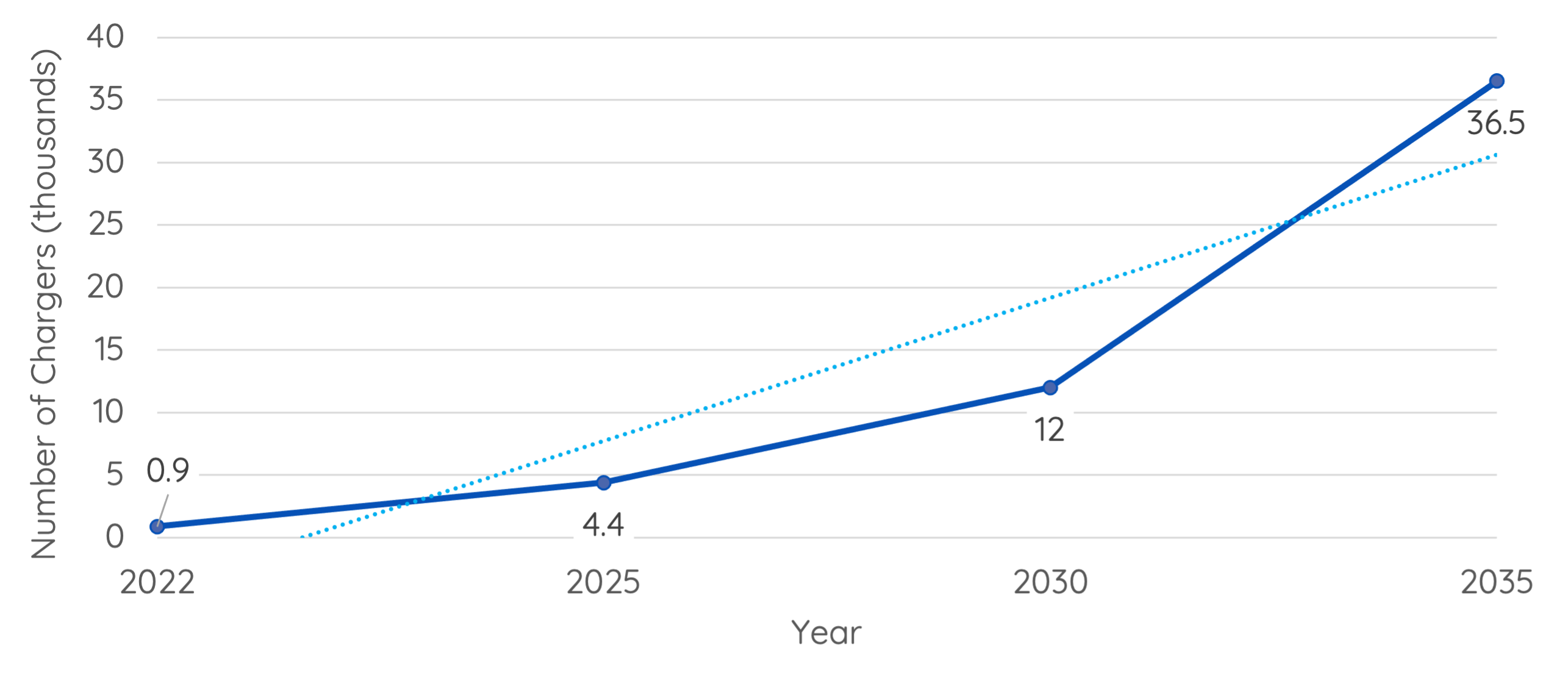Recent EV production updates
Thailand has made great strides in its commitment to becoming an Electric Vehicle hub, and is well on track to reach the government’s sustainable development goal of achieving a 30% EV-to-combustion engine vehicle ratio. This progress is largely attributed to the Thai government’s efforts, policies, and incentives for companies to invest in electric vehicles. Some of the major breakthroughs and investments are summarized below:
✓ Neta Auto has entered Thailand by introducing an electric city car. This will be available at 30 dealers nationally by the end of 2022.
✓ Neta Auto is working with a PTT subsidiary called Arun Plus. This joint-venture is focusing on creating an EV ecosystem. This will be achieved by introducing a production hub assembling Neta Vehicles.
✓ BYD Co., in conjunction with WHA Corp., has purchased land in the Eastern Economic Corridor (ECC) to build its electric vehicle production plant in Southeast Asia. This investment is significant, being WHA’s biggest deal in 20 years.
✓ A USD 1 billion dollar deal was announced in May between Foxconn and Arun Plus. Their new venture, Horizon Plus, will manufacture and develop EVs in Thailand using their factory, which is scheduled for completion in 2024.
Policy environment of electric vehicles in Thailand
The policy environment in Thailand is well-aligned with their goals and aspirations to accelerate the development of EV production. Their incentives include a reduction in the exercise duty on electric vehicles and enhanced investment incentives for EV production, which earlier this year were modified to include smaller projects. The revisions made to the BOI incentives were focused on ensuring that the scheme was suited to a rapidly changing economic environment. Another benefit of the modifications was to increase the accessibility of the incentives to SMEs and start-ups, which needed to manage their costs more effectively. The revisions also abolished two requirements, namely:
1. The condition barring investors from receiving additional benefits from other agencies.
2. The requirement for ISO certification.
The BOI’s approach goes far beyond the production of EVs. The policy also considers the supply chain and infrastructure aspects required for the increased use of EVs in Thailand. The BOI has approved a three (3) to five (5) year tax holiday for charging service providers. Currently, over half of Thailand’s charging stations are located in the Bangkok metropolitan area. This tax holiday will help initiate investments throughout the country, resulting in more extensive and robust charging infrastructure.

Figure. Thailand’s Public Fast Chargers.
Progress in battery supply and innovation
The Thai state-owned company PPT is also making extensive progress on the battery front to efficiently and effectively power EVs. PPT has partnered with Global Power Synergy Public Company Limited (GPSC) to conduct research and development into battery technology and specialize in battery production. Together, PPT and GPSC have opened the first semi-solid battery production facility in Southeast Asia in the EEC. This makes Thailand the third country in Asia with such a facility and shows they are making tremendous progress towards increasing the use of EVs in Thailand.
Electric vehicles and a cleaner economy
Another factor driving the progress toward the use of EVs is in the context of electrification and decarbonization. Electric vehicles are vital to Thailand’s successful transition to a cleaner and greener economy. Multiple stakeholders’ interest in reducing their carbon levels plays a crucial role in this transition. The public sector, companies, entrepreneurs, suppliers, and consumers are all advocating and working towards enhancing the EV market domestically. Ultimately, the new components, batteries, chips, and charging stations will take Thailand’s auto manufacturing industry to the next level. A continued effort to combine two of Thailand’s strengths—vehicle production and technological innovation—will allow Thailand to be a global pioneer in the future of road travel.